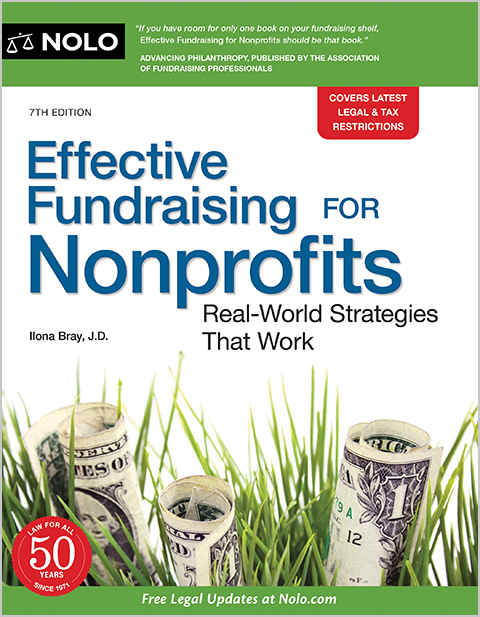Nonprofit Marketing: Just How to Develop a Powerful Brand Name and Boost Assistance
Nonprofit Marketing: Just How to Develop a Powerful Brand Name and Boost Assistance
Blog Article
The Duty of Neighborhood Involvement in Nonprofit Fundraising: Structure Lasting Relationships for Lasting Assistance
Neighborhood interaction is progressively acknowledged as a critical component of successful nonprofit fundraising. By cultivating real relationships with regional stakeholders, organizations can grow count on and loyalty, which are crucial for lasting assistance. Nonetheless, the techniques and techniques employed to engage communities vary widely, raising important questions regarding performance and influence. What are the very best techniques for growing these essential connections, and just how can nonprofits measure their success in this field? Recognizing these characteristics can substantially influence the future of fundraising efforts and the general objective of nonprofit organizations.
Comprehending Community Involvement
Area involvement is an essential part of effective not-for-profit fundraising initiatives. Nonprofits need to identify vital stakeholders-- such as community members, neighborhood services, and various other companies-- to produce effective engagement strategies.
Reliable neighborhood engagement is asserted on active listening and responsiveness to the demands and rate of interests of the area. This procedure involves getting feedback, comprehending community characteristics, and guaranteeing that the company's mission lines up with local concerns. Involving the community can take numerous forms, consisting of public conferences, volunteer chances, and collaboration initiatives, each created to urge involvement and financial investment in the company's goals.
In addition, community interaction need to be approached as a continuous discussion as opposed to a single effort. By cultivating an inclusive atmosphere where area voices are listened to and valued, nonprofits can build a solid structure for future fundraising undertakings. Ultimately, a deep understanding of neighborhood involvement encourages organizations to produce authentic links that boost their overall effectiveness and sustainability.
Benefits of Strong Relationships
Solid relationships developed via community interaction return various benefits for not-for-profit fundraising initiatives. Firstly, these relationships foster count on and reliability, crucial components in encouraging donors to contribute. When prospective advocates see a not-for-profit proactively entailed in their neighborhood, they are extra most likely to count on its mission and impact.

In addition, these partnerships help with reliable communication. Nonprofits can utilize their links to share stories of influence, updates, and requires, guaranteeing that advocates remain enlightened and involved. This open line of communication not just enhances bonds yet also motivates referral promotion, broadening the nonprofit's reach.
Finally, solid community ties can bring in new companions and sponsors. Companies and individuals are extra inclined to line up with companies that demonstrate purposeful community participation, giving added sources and support that can dramatically improve fundraising abilities. Thus, cultivating robust connections via neighborhood interaction is integral to a not-for-profit's long-term fundraising success.
Methods for Reliable Involvement
Just how can nonprofits effectively involve their areas to improve fundraising efforts? Normal updates, involving content, and calls-to-action can galvanize community passion and engagement.
Second, holding neighborhood occasions, such as workshops, volunteer opportunities, or fundraising drives, facilitates face-to-face communication, permitting nonprofits to showcase their influence and efforts. These events not just increase funds but likewise grow partnerships and permit area participants to engage directly with the reason.
Third, implementing customized interaction techniques can improve interaction. Customizing messages to specific donor segments based upon interests and past contributions cultivates a sense of belonging and investment in the company's goal.
Last but not least, developing collaborations with local organizations and neighborhood leaders can enhance outreach initiatives. Joint campaigns can improve visibility and credibility, demonstrating a cumulative dedication to the neighborhood's well-being. By incorporating these approaches, nonprofits can construct lasting connections that improve fundraising initiatives and drive sustainable assistance.
Determining Involvement Success
While involving the community is critical for effective not-for-profit fundraising, gauging the efficiency of these engagement efforts is my latest blog post similarly important. Establishing clear metrics click for source permits companies to assess exactly how well they are attaching with their target market and achieving their fundraising objectives. Trick efficiency indicators (KPIs) such as contributor retention prices, volunteer involvement levels, and involvement on social networks platforms supply tangible data for evaluation.

On a regular basis evaluating these metrics allows companies to pivot their methods when needed, making sure that neighborhood interaction remains aligned with their total objective. Furthermore, sharing these outcomes with stakeholders promotes openness and builds trust fund, motivating further area involvement. Inevitably, a robust dimension framework not only educates future fundraising initiatives yet also enhances the relationship between the not-for-profit and its supporters, laying the foundation for sustainable success.
Instance Studies in Neighborhood Influence
Various study illustrate the extensive influence that community interaction can carry not-for-profit fundraising success. One noteworthy instance is the "Something to chew on" initiative, where a regional food financial institution partnered with schools and companies to host community dinners. These occasions not just raised funds yet additionally promoted a sense of belonging among participants, considerably boosting benefactor retention prices.
Another compelling situation is the "Environment-friendly Spaces Task," which involved local residents in the revitalization of city parks. This effort not just amassed financial backing from regional businesses however additionally grew a volunteer base that added to ongoing maintenance and programming. The sense of ownership and pride amongst area participants converted right into continual payments.
In the world of arts, the "Art for All" project efficiently involved regional artists and customers to produce collective art setups, causing boosted exposure and contributions for a neighborhood arts not-for-profit.
These instances highlight that when nonprofits focus on area participation, they can develop lasting relationships that enhance fundraising initiatives, making certain sustainable support and promoting a dynamic neighborhood culture. Such cases show that community interaction is not simply a method yet an essential pillar of nonprofit success.
Verdict
Finally, area interaction is important to the success of nonprofit fundraising initiatives. By cultivating strong relationships with neighborhood stakeholders, organizations improve trust and credibility, bring about enhanced donor retention and commitment. Implementing reliable engagement approaches and determining their influence makes sure that Visit Your URL nonprofits can adapt and prosper. Ultimately, a durable foundation of neighborhood support not just enhances fundraising possible however additionally cultivates a society of collaboration, necessary for achieving lasting organizational goals and maintaining meaningful effect.
Nonprofits should determine vital stakeholders-- such as community members, neighborhood organizations, and other organizations-- to produce reliable engagement strategies.

In final thought, neighborhood engagement is integral to the success of nonprofit fundraising initiatives.
Report this page